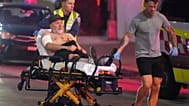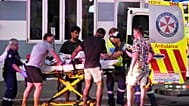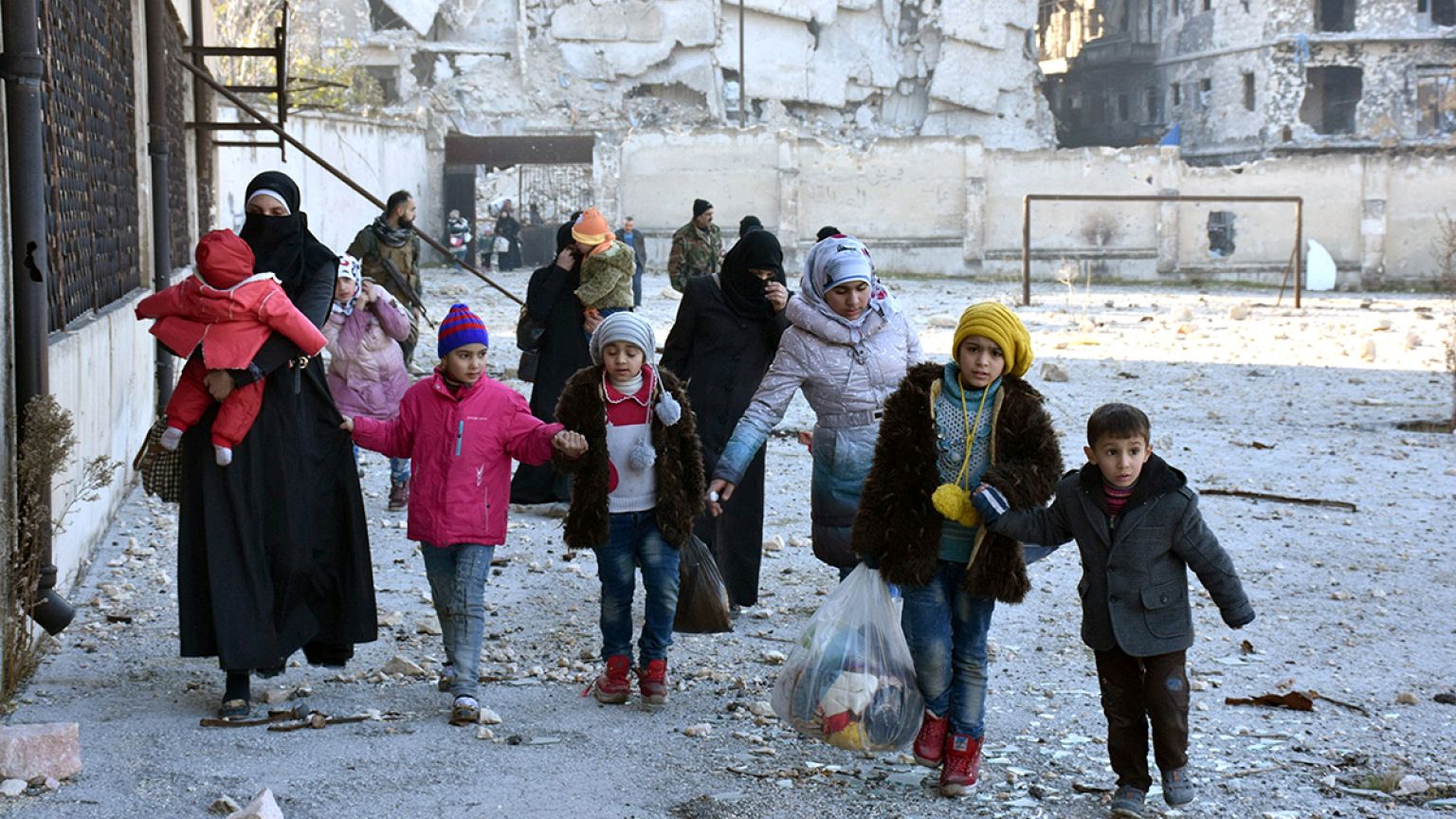Aleppo the target of a relentless human violence
Aleppo, like many other cities in the history of war, is the target of a relentless human violence where not only the combatants suffer, but also the blameless.
The bleeding dust covered little boy plucked from the wreckage of a building in Aleppo, became the face of civilian suffering.
Three months after footage of Omran Daqneesh shocked the world, we spoke to the man who filmed him https://t.co/FpRxYTWQi8 pic.twitter.com/aYMBB06luH
— DelayedGratification (@dgquarterly) December 7, 2016
For President Assad it was forged footage by the volunteer rescue group.
Since Russia entered the fray in support of Assad at end of 2015 the war turned in favour of the regime. The UN is nullified and the world’s great powers seek a cease fire. In February Assad accepts with conditions.
Assad gave his opinion on the ceasefire:
“When does the West want a ceasefire? The answer is clear when the gunmen begin to suffer and are facing defeat. The first thing about a ceasefire is, a ceasefire occurs between two armies and between states, but never between a state and terrorists.”
Teenage #girl with #kids run among #dead bodies following #Assad Regime strike over civilians #Aleppo #Syria #AA #CivilWar #AleppoIsBurning pic.twitter.com/qkBRpU1YXp
— Anadolu Images (@anadoluimages) December 1, 2016
Life assumes a veneer of normality for a few brief weeks in battered Aleppo.
The calm before another deadly storm.
In order to bolster legitimacy Assad calls legislative elections in the regions controlled by the regime. Not surprisingly they garner 80 percent of the vote.
The map of blighted Syria indicates that Assad presides over a fractured country, but his backers in Iran and Moscow are resolutely opposed to any regime change by “external forces.”
Russia’s air power has kept Assad in the war and in power, without Moscow’s might anti-Assad forces could well have seized the initiative in Syria’s jigsaw war.
Aleppo is a tale of two cities as the government held west lives in relative tranquility enjoying the trappings of a sinister normality. The rebel held east is an urban killing zone. Aleppo is a snapshot of a moribund country and a pawn in a growing international discord.
A #teenage boy cries over dead bodies of two #kids after #Assad Regime's strike over #civilians #JubAlQuba #Aleppo #Syria #AA #masskilling pic.twitter.com/Q8h2HSYLFO
— Anadolu Images (@anadoluimages) November 30, 2016
In September after protracted discussions John Kerry and Sergei Lavrov play peacemakers. Though Washington and Moscow are still far from agreement.
Even John Kerry appeared not to believe the words coming out of his mouth:
“We believe that the plan as it is set forward, if implemented, if followed, has the ability to provide a turning point, a moment of change”
The hope lasts just a few days after several violations American and Australian aircraft mistakingly bomb Syrian army positions killing scores of troops.
Hours later a Red Crescent aid convoy is destroyed with 12 aid workers killed.
Members of UN Board Investigating Aid-Convoy Attack in Syria Visited Damascus https://t.co/s25to13Ykx #News #Investing
— AnCap Crypto (@ancapcrypto) December 7, 2016
By October the war was back in all its gory and the east of Aleppo bids farewell to its last major hospital, M10 blown to bits by barrel bombs.
United Nations aid chief Stephen O’Brien fiercely criticised the attack:“The health care system in eastern Aleppo is all but obliterated. Medical facilities are being hit one by one,” O’Brien wrote.
Amid the carnage a Syrian NGO known as the White Helmets is organising physicians, plumbers, bakers, teachers into a makeshift search and rescue outfit.
Another ingredient the election of Donald J Trump as the next president of the United States.
Assad spoke about the US election:“If, I say if, if he is going to fight the terrorists, of course we’re going to be ally, natural ally in that regard, with the Russians, with Iranians, with many other countries who want to defeat the terrorists.”
Assad will look back at 2016 as a good year his forces control the rubble of Aleppo and city described by UNESCO as “Located at the crossroads of several trade routes from the 2nd millennium. The 13th-century citadel, 12th-century Great Mosque and various 17th-century madrasas, palaces and hammams all form part of the city’s cohesive, unique urban fabric.”
Urban tragic.
Aleppo before the war: A look back at a once-thriving metropolis https://t.co/8mg0e2REeb #Syria #Aleppo pic.twitter.com/OdLYioxWVU
— Khaled (@MoonNeighbour) December 4, 2016
#Footage of devastation in the areas of #Aleppo, still under opposition control.#Assad never fought terrorists.https://t.co/liQXa9lKtE pic.twitter.com/XULgtnj8g6
— Julian Röpcke (@JulianRoepcke) November 27, 2016















